You can contact LEARNZ, part of CORE Education, at:
Postal Address:
PO Box 13 678,
Christchurch 8141,
New Zealand
<- Homepage: Bioblitz: What's in your backyard?
Kia ora koutou,
You completed your final web conference at Mount Somers before heading back up into the Ō Tū Wharekai basin. Your mission for the day was to find out how to use the information you have gained from the BioBlitz to help restore biodiversity.
Plant a plant
Ian showed you an area where DOC has planted natives. They chose plants that naturally grow in the area because these plants can survive the local conditions and provide food for animals. It was surprising to hear that these plants were planted six years ago, yet they are still so small. Ō Tū Wharekai is a challenging place to live. It has fierce winds, low rainfall and extreme temperatures. These conditions mean that plants grow very slowly. Each plant had a plastic sleeve around it to protect it from being munched by animals such as rabbits. Native plants not only provide food for animals, they also provide habitat and shelter. If you want to bring more native birds and invertebrates into your backyard then planting natives is the first step. The second step is to remove weeds that can take over. Ian showed you some of the willows that have been sprayed in Ō Tū Wharekai. Willows spread quickly and out compete natives. They also change the habitat that native animals like to live in. Watch the video about this.
Catch that predator
Another way of increasing biodiversity is to control the numbers of predators such as wild cats, stoats, ferrets, rats and possums. Damien showed you the traps that he uses here in Ō Tū Wharekai. These traps kill predators that would otherwise kill our native birds, lizards and invertebrates. The traps attract predators with bait and then instantly kill the predator when it enters the trap. Damien explained that trapping predators means that many more native bird chicks will survive. Without predator control many of our endemic birds face extinction. You too can help by setting your own traps and keeping your cat inside at night. Watch the video about this.
Found nowhere else in the world
Over the last few days you have seen a lot of biodiversity, but you can find many of these species in other places. Nancy wanted to show you an unusual and unique plant that only grows here in Ō Tū Wharekai. Craspedia heron is a herb which grows near Lake Heron in one small location. The plant has bright yellow flowers in summer and the leaves looked furry. This helps stop the plant from losing moisture. To help save this tiny plant DOC have collected its seeds and sent them to a nursery near Christchurch. Here seedlings are grown ready to plant in another area of Ō Tū Wharekai. DOC have set up fenced areas for the plants to protect them from rabbits and hares. Growing these plants in a different area means that if their original site is destroyed then the species will not become extinct. This plant may not look very impressive, but it is incredible knowing that it doesn’t grow anywhere else in the world. You can see Craspedia heron in the video.
Tiny butterflies
Brad was keen to show you a boulder copper butterfly that he caught yesterday. Unfortunately, the butterfly flew away as soon as Brad opened the jar he was keeping it in. You caught a glimpse of coppery yellow as it escaped. These native butterflies are one of the smallest butterflies in New Zealand. Like many native butterflies their numbers are falling due to habitat loss and parasitic wasps. By completing a BioBlitz scientists can gain a better understanding of where species such as copper butterflies live. The more information you have about native plants and animals the better you can look after them.
This field trip has shown you how to observe, catch and record different species. It has also shown you how much biodiversity areas like Ō Tū Wharekai have. Remember to check out the iNaturalist page to see what we found on this field trip. You can also check out the Lake Clearwater BioBlitz that Mount Somers Springburn School students did in February. Now you can look at what’s living in your own backyard and work on creating the best habitat you can to support native plants and animals.
I hope you have enjoyed the field trip and can join us on another one soon.
Mā te wā,
Shelley the LEARNZ field trip teacher.
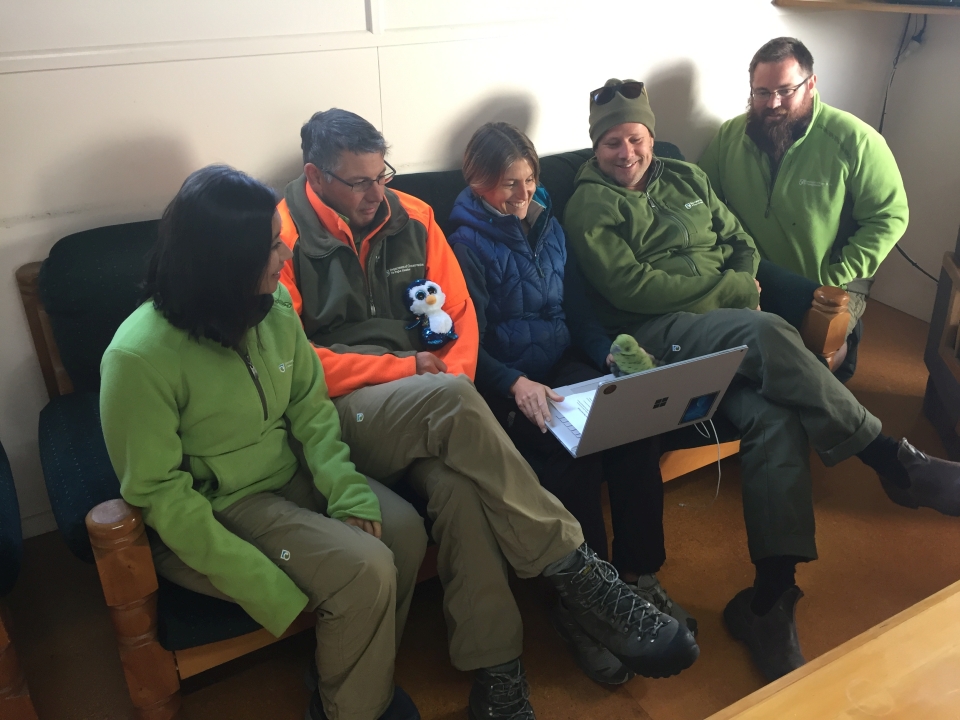
Nancy, Brad, Shelley, Ian and Damien answer questions from Otatara School during the last field trip web conference. Image: Andrew Penny, LEARNZ.

This area of Ō Tū Wharekai is being restored with native plants. Why are plastic sleeves placed around the plants? Image; Shelley Hersey, LEARNZ
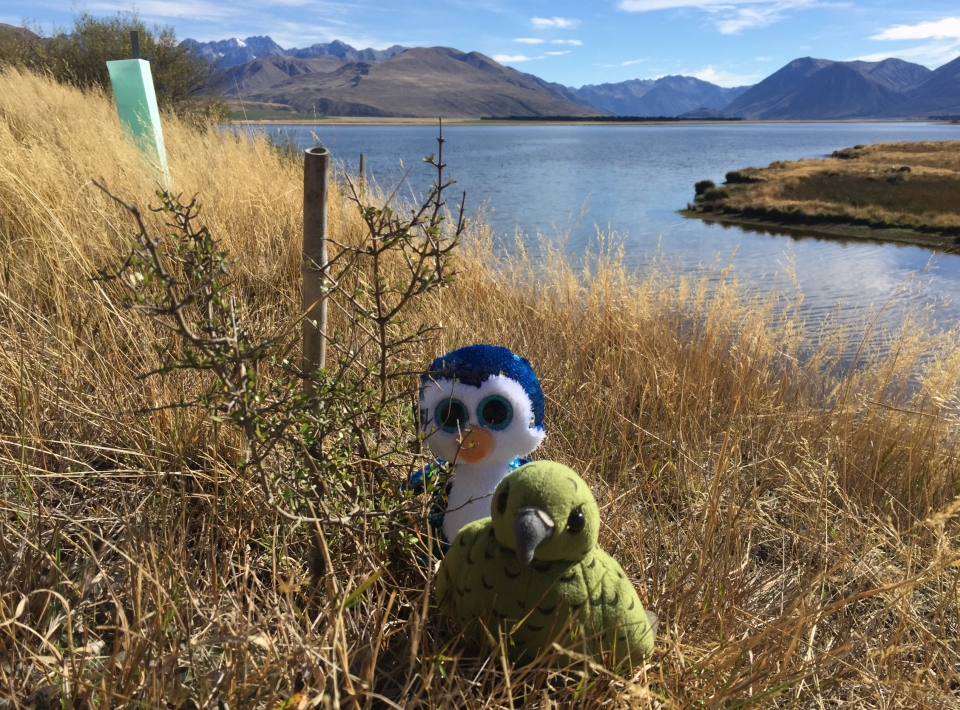
The ambassadors Pengu and Māia check out one of the native coprosmas that have been planted beside Lake Heron. Image: Shelley Hersey, LEARNZ.
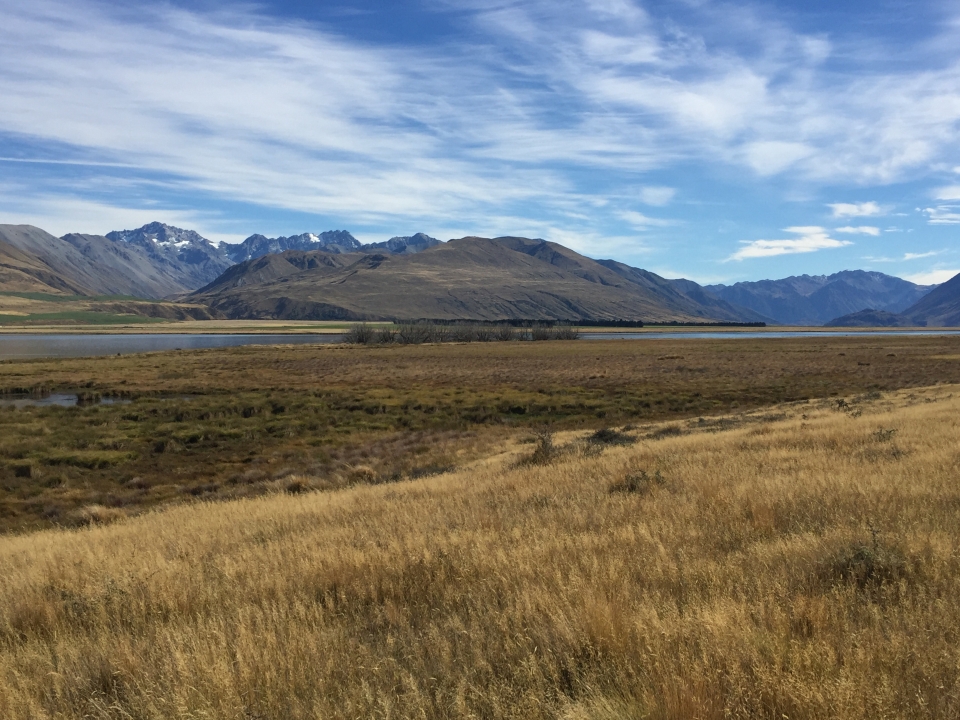
In the distance you can see a line of dead willow trees. Why do you think these willow trees have been killed? Image: Shelley Hersey, LEARNZ.
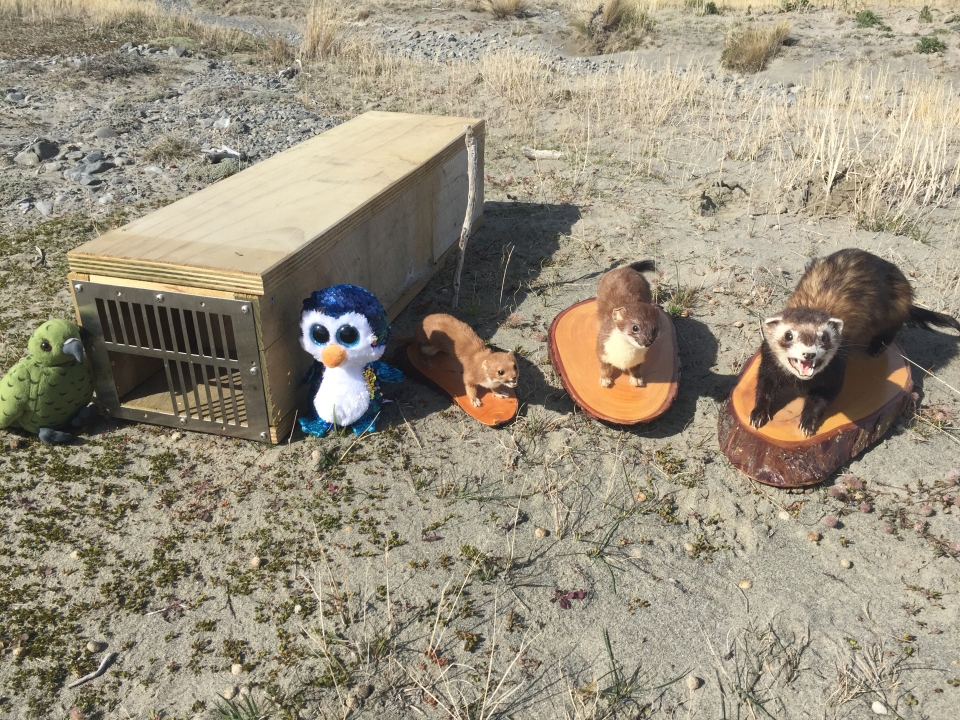
The ambassadors check out a trap for predators such as this weasel, stoat and ferret. Why are these predators a problem? Image: Shelley Hersey, LEARNZ.
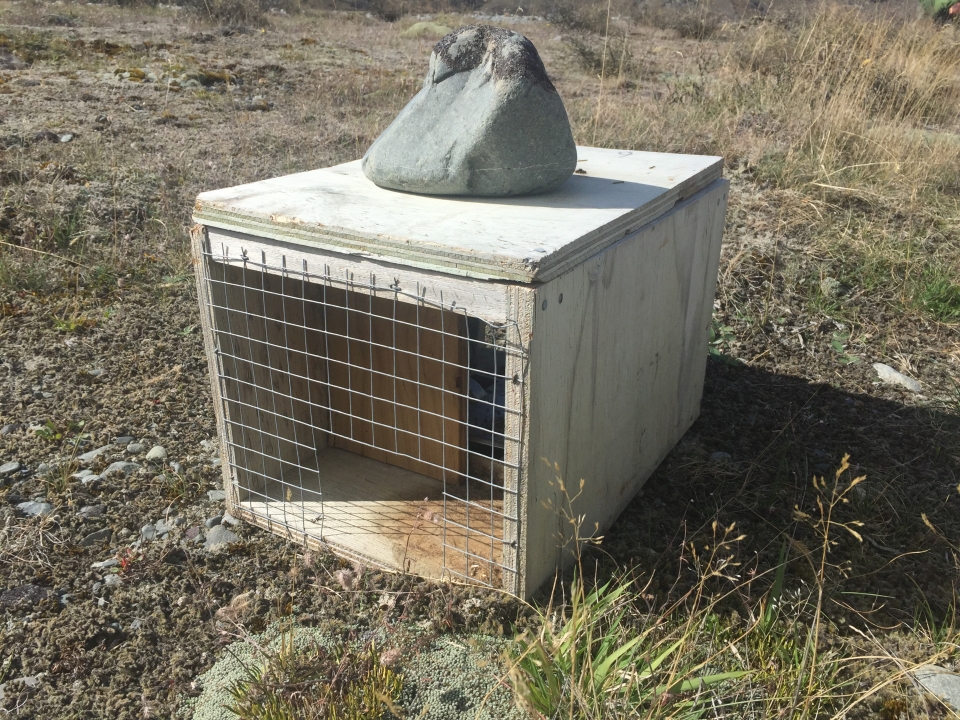
This is a DOC trap used to reduce predator numbers in Ō Tū Wharekai. Image: Shelley Hersey, LEARNZ.
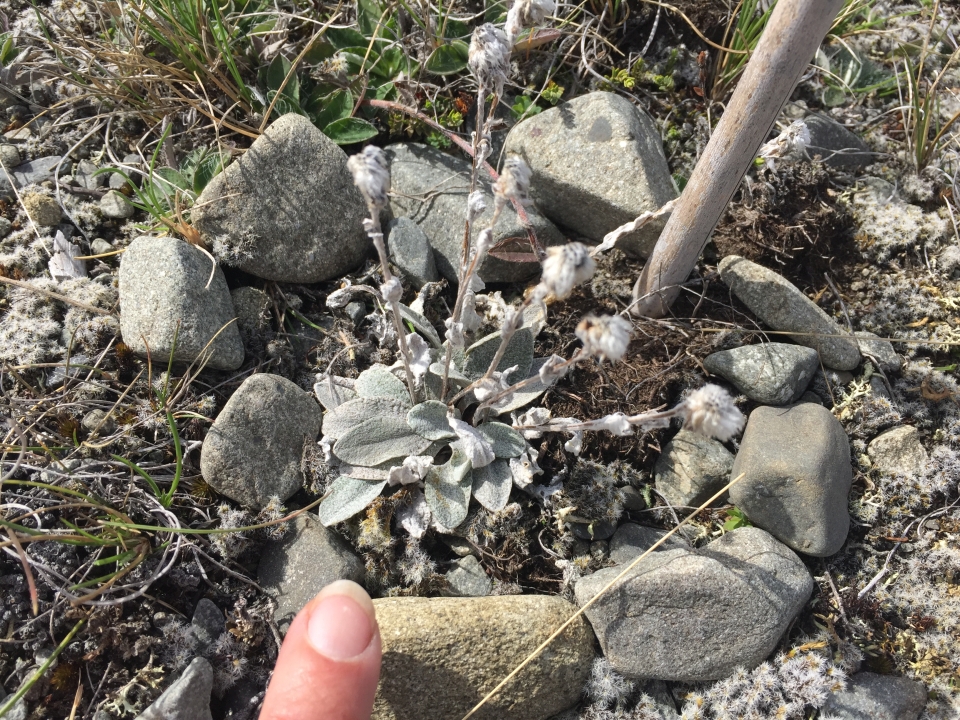
This is a herb called Craspedia heron which is only found in Ō Tū Wharekai. Image: Shelley Hersey, LEARNZ.

Nancy weeds around some of the Craspedia heron plants which have been grown from seed. What is the fence for? Image: Shelley Hersey.
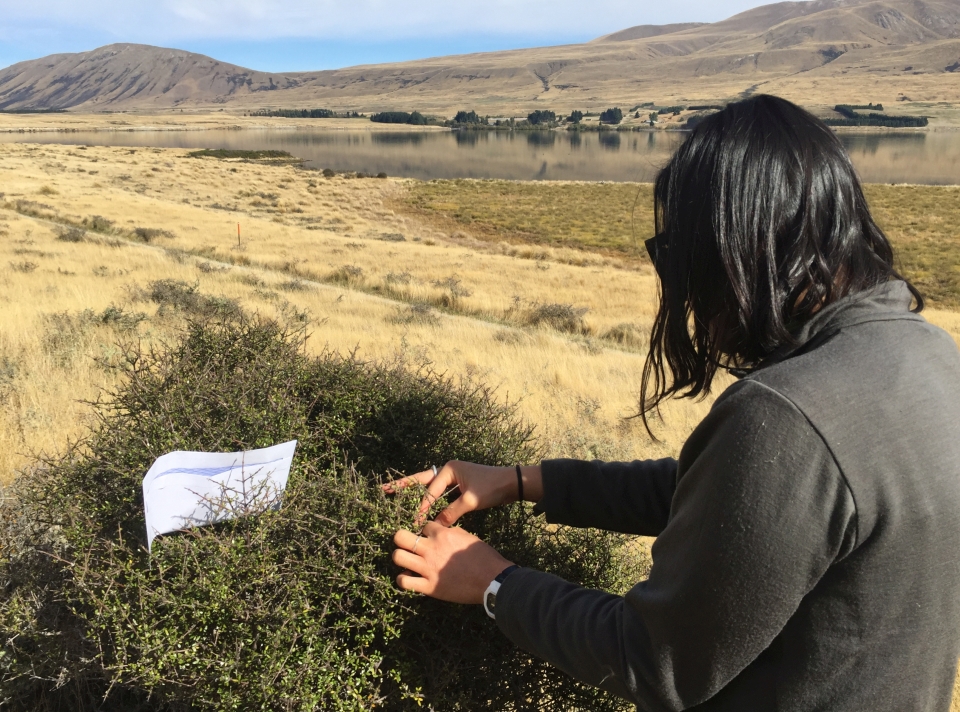
Nancy collects the berries from a coprosma so she can grow more of these plants. This is called eco-sourcing seeds. Why is eco-sourcing important? Image: Shelley Hersey, LEARNZ.

Brad caught this boulder copper butterfly during the BioBlitz. It is one of the smallest native butterflies in New Zealand. Image: Brad Edwards.